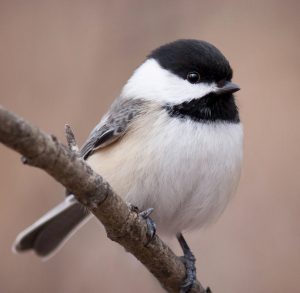By Bill Shelmerdine, Olympia CBC Coordinator
This year’s Olympia Christmas Bird Count (CBC) on Sunday, December 20 was the 116th year for this annual event sponsored by the National Audubon Society. Black Hills Audubon sponsors the Olympia Area CBC, which has been conducted about 40 times beginning in 1954, and more or less continuously since 1978. This year 89 field observers covered the 16 areas within the 15-mile-diameter count circle, most on foot or by car, with two teams on boats to cover Puget Sound waters from Olympia to the Nisqually Reach—many thanks to boat owners and skippers Eric Hulbert and Greg Kluh who kindly volunteer their boats, time, and expertise.
The weather was somewhat better than the forecast predicted: overall cool, 35-45oF with intermittent showers. Count day came on a cooling trend following a persistent cycle of stormy weather. Rain was heavy rain at times, especially between 10:00 and noon. Birders in forested areas at that time, as our teams were, found conditions difficult and birds scarce.
Count day begins at midnight and runs for 24 hours. Most participants count only during daylight hours, though a few intrepid souls venture into the darkness in hopes of adding an owl or two to the day’s tally. This year rain and wind in the pre-dawn hours made me forgo the owling experience in the morning, but others were more hardy and we ended the day with four species of owls: Barn, Great Horned, Northern Pygmy, and Barred. The following day I encountered a Western Screech-Owl just ¼ mile outside the count circle—not good enough for count week, but still a rare find in our area these days.
The Results:
In general, participants felt that the overall numbers were low. A total of 127 species for the day equaled the average count over the past 20 years but was well short of the high count of 134 species in 1994 and 1998. The total number of 41,400 for the day was 10-20% below the average for the past five years.
The best finds on the included Red-shouldered Hawk (second time in past 30 years); Black Phoebe (3 previous records, all in past 5 years); Townsends Solitaire (second count record); and Swamp Sparrow. New high counts were reported for Eurasian Wigeon (8); Northern Shoveler (425; previous high 274); Ring-necked Duck (683; previous high 603); Bald Eagle (189 with more than half in the McLane Creek-Mud Bay Area); and White-throated Sparrow (4). The sentimental favorite for me was Ruffed Grouse, seen for the first time since 2007; it had been recorded every year prior to that.
On the flip side are the more sobering low counts. Northern Shrike was a no-show on count day for the first time in more than 30 years. Historic low numbers were also reported for Northern Harrier. (5, tied for new low); Dunlin (94, by far the lowest count ever for a species typically reported in the low thousands); Common Murre (15); Glaucous-winged Gull (835) and Glaucous-winged x Western Gull hybrids (516). It is noteworthy that the combined number for this latter group is lower than the previous low count for Glaucous-winged Gulls alone. Pileated Woodpecker (1) and Purple Finch (7) also reported new low numbers and only 169 Green-winged Teal were recorded, far below the 1,000-2,000 birds of the recent past.
This year’s count numbers show some interesting trends. Species that have posted high or near-high numbers consistently over the past three years include Bald Eagle; Eurasian Collared (71) and Mourning Doves (89); Anna’s Hummingbird (104); Western Scrub-Jay (60); Common Raven (33) and Brown Creeper (47). Species that have shown very low numbers in recent years include Red-throated and Pacific Loons and the salt-water grebes; Horned and Red-necked Grebe had the three lowest count totals within the past three years. Alcids and some finches were also low, with low numbers clustered in recent years.
In the evening following the count, the compilation and count-down of species seen accompanied the chili dinner at the Temple Beth Hatfiloh in downtown Olympia. Our heartfelt thanks go to the many BHAS volunteers who plan, prepare, and execute the event. It was wonderful as usual. The count would not take place without the help of our volunteers: thanks to all the participants who make this event a success year in and year out. Until next year, cheers, good birding.
Photo credit: Chickadee. Carol Poulos









